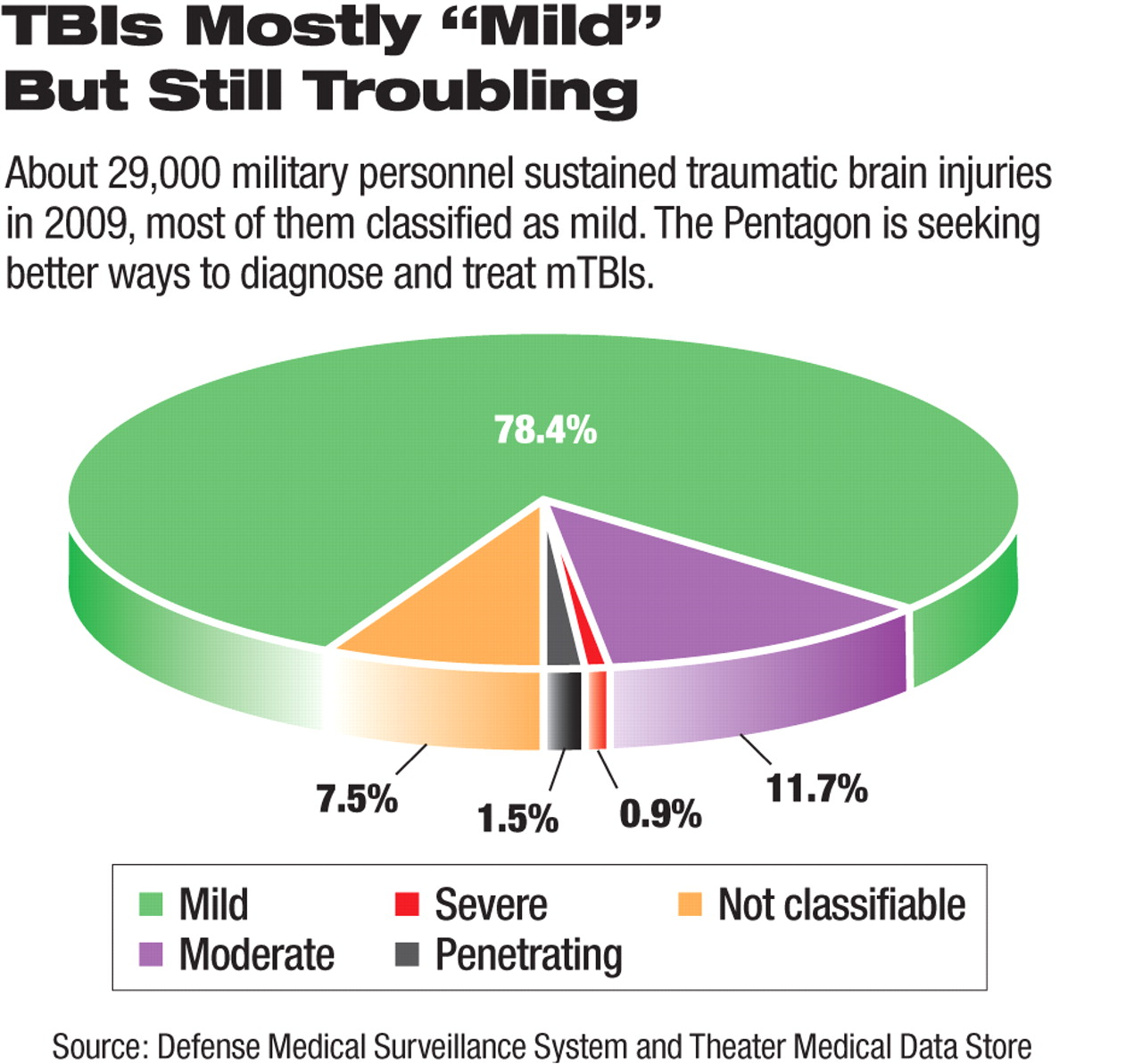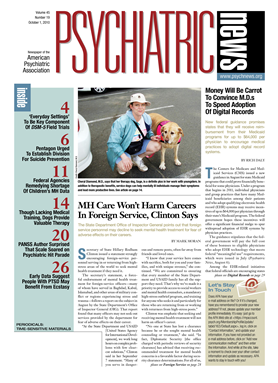The roadside bomb blast long ago became a preferred weapon in the wars in Iraq and Afghanistan. The U.S. government has spent billions on systems to detect such bombs before they explode and on treating troops injured after they detonate.
When prevention efforts fail, many of the soldiers unlucky enough to be within range of one of these explosions suffer from traumatic brain injuries (TBIs), invisible wounds that may leave a variety of serious neurological and psychiatric symptoms in their wake.
In June, the Department of Defense (DoD) issued a new directive that changed how the armed forces will connect troops exposed to such blasts to medical services.
Instead of depending on troops to come forward to report their symptoms, the new system adopts an “inciting event” approach, said Katherine Helmick, M.S., R.N. Simply being exposed to a blast will now trigger mandatory screening and evaluation, said Helmick, senior executive director for traumatic brain injury at the Defense Center of Excellence for Psychological Health and Traumatic Brain Injury.
In the past, soldiers have often hesitated to complain about symptoms of mild TBIs (mTBIs) or concussions after an explosion or vehicle accident, fearing that they would seem weak in the eyes of colleagues or officers or because they wanted to stay with their unit at any cost. Military health officials use the terms “mTBI” and “concussion” interchangeably.
But there are valid military reasons for ensuring a soldier's health before he or she returns to battle, Helmick told 925 attendees at the DoD's fourth annual TBI Military Training Conference in Washington, D.C., in August, sponsored by the Defense and Veterans Brain Injury Center. Troops with a mild TBI who return to duty before they have recovered exhibit poor marksmanship, reduced concentration, and slowed reaction times.
All Blast Victims to Be Evaluated
When the new policy is fully implemented, all troops exposed to a blast will have to undergo a full medical evaluation and be cleared to return to duty or to play sports.
“The directive merges line-leadership responsibility with mandated medical actions,” said Helmick.
The directive will also link existing documentation, like pre- and postdeployment cognitive tests, with standardized measures to diagnose brain injuries and new metrics to assess diagnoses, treatment compliance, and follow-up rates.
So far, more than 600,000 troops have taken predeployment cognitive tests, which can serve as a baseline against which postevent scores from the battlefield can be compared.
Yet another goal of the updated procedure is to have a system that permits data sharing between the DoD and the Department of Veterans Affairs, including baseline scores and battlefield reports, as well as clinical data, she added.
Such a system will help meet the demands of veterans' service organizations such as the Iraq and Afghanistan Veterans Association and the Veterans of Foreign Wars for screening, diagnosing, and treating service members for TBIs.
Search on for TBI Biomarkers
Other speakers at the conference reported on research over the last few years that has explored how explosive blasts affect the head and body. Researchers have been looking at a range of signs to provide information on the presence, diagnosis, and progress of TBI. These include a continuing search for biomarkers in serum or saliva or on the skin.
Anything discovered in the course of military TBI research could have immediate civilian payoffs as well.
An estimated 1.7 million TBIs occur every year in the United States, resulting in 1.37 million emergency department visits, 275,000 hospitalizations, and 52,000 deaths, said Lt. Col. Randall McCafferty, M.C., at the same conference. McCafferty, a physician, is chief of medical staff for the 59th Medical Operations Group at Lackland Air Force Base in San Antonio and a neurosurgery consultant to the Air Force surgeon general.
In 2009, there were about 29,000 TBIs among soldiers (most of them ranked as mild) resulting from combat casualties, motor vehicle accidents, and sports injuries, he said.
Secondary Effects Can't Be Overlooked
Military mTBIs in war zones aren't only produced by direct blast effects, McCafferty noted. There are substantial secondary effects. For example, in addition to the overpressurization wave, blast victims may be hit by shrapnel and other debris propelled by the explosion. They may be lifted off the ground and thrown against a building or other object or dashed against the inside of a vehicle. Troops may suffer burns or inhale hot gases.
There is even evidence from animal studies that ionized gases propelled by the blast may create an electromagnetic pulse and disrupt calcium channels in the brain.
The brain damage inflicted by an mTBI is cumulative, and each incident leaves the victim more vulnerable to injury after subsequent blasts, said Helmick.
“Symptoms following repeat concussion may be more serious and resolve at a slower rate,” she said. “The new directive will develop protocols for anyone sustaining three or more mTBIs within 12 months.”
Finally, many soldiers with mTBI also develop symptoms of posttraumatic stress disorder, either because an mTBI suffered during war occurs in the context of an emotionally traumatic event or because some symptoms of the two diagnoses resemble each other.
That combination may result in a constellation of symptoms and diagnoses, said Capt. Paul Hammer, a Navy psychiatrist. The aftereffects may include anxiety, depression, sleep problems, or substance abuse.
“We in mental health must be much more collaborative with our colleagues in pain management and neurology,” said Hammer, director of the Naval Center for Combat and Operational Stress Control in San Diego. “Treating PTSD and mild TBI takes a great deal of hard work—there's no magic bullet.”
The only evidence from prospective, randomized, controlled clinical trials specifically for TBI is patient education about the nature and outcomes of TBI. Medications for the symptoms that occur after TBI have been approved, but not necessarily tested in this patient population.
Future work will include educating troops and combat commanders about TBI, training health providers, and developing faster and more effective screening tools for field use.
Information about the Defense and Veterans Brain Injury Center is posted at <http://dvbic.org>. 

